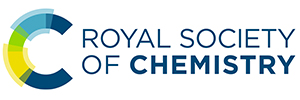 On June 17, 2020, Dr. Arumugam Manthiram, winner of the 2020 Henry B. Linford Award for Distinguished Teaching, presented his talk on “Intricacies of High-Energy Cathodes for Lithium-Ion Batteries” via a live webinar presentation.
On June 17, 2020, Dr. Arumugam Manthiram, winner of the 2020 Henry B. Linford Award for Distinguished Teaching, presented his talk on “Intricacies of High-Energy Cathodes for Lithium-Ion Batteries” via a live webinar presentation.
Dr. Manthiram’s talk covered the fundamental science behind the development of high-energy density cathodes for lithium-ion batteries in the 1980s, the richness and complexity of layered oxide cathodes for lithium-ion batteries, and exposure to a perspective on high-energy, long-life, safe lithium-ion batteries.
View Dr. Manthiram’s webinar presentation, here.
Following the talk, attendees were given the opportunity to ask Dr. Manthiram questions in a Q&A session, available below.
Q&A with Dr. Arumugam Manthiram
Q: Fast charging, battery safety, and thermal issue are big topics for EVs. Does your group also work on these topics?
A: I agree that thermal stability and safety as well as fast charging are critical issues for EV as we move forward. We cannot just focus on energy density and cycle life alone. Our group looks at performance metrics holistically, and we do collect routinely differential scanning calorimetry data on the oxide cathodes we develop. We also plan to collect more in-depth safety data in collaboration with others on larger cells (2 Ah or higher) fabricated with the low-cobalt and cobalt-free cathodes we develop. In addition, we have been developing nanocomposite foil anodes to replace graphite anode, which has the potential to offer fast charge capability.
Q: Why did you add Te? What is the chemical perspective?
A: Tellurium lies below sulfur in the same group in the periodic table. Therefore, the tellurium added to the sulfur cathode reacts with polysulfides to generate soluble polytellurosulfides that then migrate to the lithium-metal anode and form stabilizing lithium thiotellurate and lithium telluride in situ as SEI components. The in situ generated SEI protects lithium-metal anode, suppresses electrolyte decomposition on lithium-metal surface, and thereby provides efficient lithium plating and stripping.
Q: What is anode-free cell?
A: Anode-free cell means we have only the current collector (for example, Cu) at the anode, and there is no anode host such as graphite or lithium-metal anode. Basically, the lithium is provided only by the lithium-containing cathode, such as LiCoO2. The anode-free cells can particularly help to understand in-depth the lithium plating/stripping dynamics and thereby guide to improve lithium-metal cycling efficiency.
Q: Can you explain what is meant by air stability or air instability?
A: The layered oxide cathodes containing high amounts of nickel are prone to high reactivity with the moisture and CO2 present in ambient air. This is because Ni3+ present in high concentrations in high-nickel layered oxides are unstable in contact with air, so it gets reduced to Ni2+ by leaching out some lithium to the surface that forms LiOH, LiHCO3, and Li2CO3 on the surface, which are called “residual lithium” in the industry. This is referred to as air-instability. The presence of more than 2,000 ppm residual lithium can complicate the electrode slurry preparation due to clogging. The residual lithium also leads to performance degradation and release of gas in the cell during cycling.
Q: Why Ni, Co, and Mn over other transition metals? Any other bi, tri, tetra, etc. metal systems to consider?
A: Co and Ni lie on the right in the periodic table among the 3d transition metals. As we move to the right in the periodic table, the effective nuclear charge increases, so for a given oxidation state or redox couple, the redox energy gets lowered, resulting in a higher cell voltage of ~ 4 V. On the other hand, metals, such as Ti and V, lying on the left in the periodic table have their redox energies higher for the same oxidation state or redox couple, resulting in a lower cell voltage of < 3 V. To maximize the cell voltage and hence energy density, we employ Co and Ni. Regarding bi, tri, tetra, etc., the lithium-ion battery industry is already based on tri-metal ions, viz., Ni, Mn, and Co or NMC cathodes.
Sponsors
A special thank you to our sponsors Admiral Instruments, Hiden Analytical, and the Royal Society of Chemistry.





